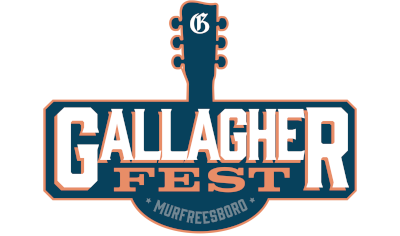Sweltering temperatures, pesky bugs and blisters brought on by combating the hard battlefield soil weren’t enough to discourage volunteers who, for the second weekend in a row, braved 94-degree heat to participate in the Harding House Civil War History Survey July 19-20.
The project, a geospatial/archaeological project conducted on land slated for development this month, was initiated by Dr. Tom Nolan and archaeologist Zada Law, both members of MTSU’s geosciences faculty, with assistance from Dr. Hugh Berryman, director of the MTSU Forensic Institute for Research and Education, as well as members of Middle Tennessee Metal Detectors, MTSU anthropology and public history students, Gib Backlund and Jim Lewis from the National Park Service, and developer Stonegate Commercial.
“We’re having to do this work in a really short time frame in one of the hottest and most humid parts of the year,” remarked Law of the all-volunteer effort. “The heat, actually the humidity, was brutal out there.”
In spite of the heat-related conditions, “we completed a systematic metal detecting survey of the surface of almost the entire development tract,” she noted. “And we also conducted a pedestrian archaeological reconnaissance of the field where the Harding’s brick kiln is reported to have been located.”
As a result, the final weekend of the July survey yielded historically valuable finds, said Nolan, director of MTSU’s Laboratory for Spatial Technology, who credits and praises project volunteers for the recovery of not just farm implements, bullets, shell fuse and shell fragments, but also for the weekend’s most celebrated Civil War artifact?and one which brought cheers from the exhausted survey teams.
“Right by where we had parked our vehicles, we found a Civil War-period spur, with a silver rowel, which is the small wheel of a spur that has sharp edges,” Nolan related with excitement. “It even had the chain and buckle that had held it on (its owner’s boot) . . . and you could see how it had been lost, because one of the attachments on it broke.”
The volunteer-motivating discovery, which was located on Saturday, July 19, was one that once belonged to “a cavalry soldier or an officer,” he noted.
Regarding the horseshoe, Backlund, chief of operations for Stones River National Battlefield, said, “It’s cavalry, but it’s United States as opposed to Confederate States. It also has a mark on it that may indicate the maker. We’re not sure of the dates exactly, but it’s Civil War era . . . and we have museum technicians looking at the marks on it now.”
As for the weekend’s artifact tally, “the team of volunteers from the metal-detecting club made it possible for us to do a metal detecting survey over almost all the tract,” Law said. “I think between Saturday and Sunday, we may have had perhaps 30-40 individual fragments, including things like shell fragments that are possibly Civil War era.
“It’s so hard to tell with the clay dirt still clinging to them, and because the clock is ticking down to development, we focused on collecting the artifacts and getting their locations and moving on,” she continued. “We may have collected some non-Civil War pieces (such as farming equipment and fence wire), but experts in this era of material cultural can sort that out later.”
Backlund confirmed that the July 19-20 survey effort yielded more “minie balls, round shot and pieces of horseshoes.”
“None of this would have been possible without the great volunteer response, and that’s the truth,” Nolan observed. “I am so pleased that the anthropology students were willing to help. They conducted all the GPS data collection and bagging in the field. [And] Middle Tennessee Metal Detectors was a pleasure to work with. They systematically covered the ground, worked well with the GPS and photography teams, and were very knowledgeable about the artifacts they recovered.”
Heralding the Harding House Civil War Survey as a true partnership for historic preservation, Law said this project differed from other such efforts she’s participated in, because of the cooperative aspect of the developer and other participants.
“Much of my archaeological survey work has been connected with projects that have some type of regulatory requirement that historic sites, including archaeological sites, be taken into account before development,” she explained. “What is different about the Harding House survey is that there is no regulation or legislation that requires the developer to allow scientific community to collect historic data before development.
“We’re really grateful that the developer has allowed us to go on his land prior to conducting this survey.”
About the Site
Owned by Giles Scales Harding and destroyed by fire in the 1870s, the Harding House/brick kiln site is reported to be the locale of heavy fighting during the initial Confederate attack on Stones River Battlefield, where Confederate Col. Arthur M. Manigault and Brig. Gen. J. Patton Anderson attacked the forces of both Union commanders Brig. Gen. Joshua Sill and Col. George Roberts.
Prior to the fighting, the home was made a field hospital by and for Union troops, dubbed Hospital Harding, and at one time held about 150 wounded. The home’s owners and family were forced to evacuate the home and did not return until after the war. At one point the home was hit by cannon fire that killed four of its wounded occupants and reportedly broke the legs of the family’s piano.













